On Gold Mountain: The One-Hundred-Year Odyssey of My Chinese-American Family Read online
Page 57
“Chinese Want No Identity Errors.” Los Angeles Examiner, 6 January 1942. Engh. Frontier Faiths. (See Sources, chapter 4.)
_____. “A Most Excellent Field for Work: Christian Missionary Efforts in the Los Angeles Community, 1887–1900.” Gum Saan Journal 15, no. 1 (June 1992).
“4,000 Chinese Come to Hear Madame Chiang Kai-shek.” Los Angeles Times, 1 April 1943.
Goldberg, George. East Meets West. New York: Harcourt Brace Jovanovich, 1970, 117.
Jackson. “Behave Like Your Actions …” (See Sources, chapter 2.)
Larson. Sweet Bamboo. (See Sources, chapter 6.)
Lee. “Recreational Interests.” (See Sources, chapter 4.)
Leong, Gilbert. Lecture on Los Angeles Chinatown Methodist Mission, Chinese Historical Society of Southern California, 6 March 1991.
Linking Our Lives. (See Sources, chapter 4.)
Louis. “A Study.” (See Sources, chapter 10.)
Mason. “The Chinese in Los Angeles.” (See Sources, chapter 4.)
McWilliams, Carey. Prejudice. Boston: Little, Brown, 1944.
See, Richard. “Chinese Economic Activities in Chinatown.” Unpublished paper, UCLA, circa 1957.
_____. “A Comparison.” (See Sources, chapter 2.)
Smith, Jack. “Stunning Acts of Bravery That Will Live on in Infamy.” Los Angeles Times, 24 February 1992.
Southern California Chinese American Oral History Project: Spencer Chan, Margie Hee, Gilbert Leong, Keye Luke.
Takaki. Strangers, 374–75, 378. (See Sources, chapter 2.)
Weaver. “Enormous Village.” (See Sources, chapter 8.)
CHAPTER 17. HOLLOW BAMBOO
Author’s interviews with Pollyanne Andrews, Mari Burr, Choey Lau Fong, Choey Lon Fong, Chuen Fong, Gim Fong, Kuen Fong, Sanora Babb Howe, Dorothy Jeakins, David Lee, Leslee Leong, Marcia Norris, Sumoy Quon, Mary See, Richard See, Stella See, Albert Wong, Tyrus Wong, Wilbur Woo.
Basso, Hamilton. “Los Angeles.” Holiday, January 1950.
“California: The Pink Oasis.” Time, 4 July 1949.
Chen. The Chinese of America. (See Sources, chapter 1.)
Chen. “Socio-Cultural Patterns.” (See Sources, chapter 16.)
Doerr, Conrad J. “But Most of All, I Remember Anna May Wong.” China Doll, special edition, Spring 1992.
Gilien. “Profile of Ray See.” (See Sources, chapter 7.)
“Imperturbed.” Los Angeles Times, 8 November 1946.
Jackson. “Behave Like Your Actions …” (See Sources, chapter 2.)
“Last of Old Chinatown Condemned.” Los Angeles Daily News, 7 November 1946.
Linking Our Lives. (See Sources, chapter 4.)
Liu. Inside Los Angeles Chinatown. (See Sources, chapter 14.)
Nee, Victor G., and Brett de Bary. Longtime Californ’: A Documentary Study of an American Chinatown. Stanford, Calif.: Stanford University Press, 1972.
“Prevue Furniture Ensembles of Hollywood.” Pamphlet prepared by the public-relations department of Prevue Furniture Ensembles, 1942.
See, Ray. Scrapbook references (dates and sources unknown): “California Market Seeks Approval, Acceptance of Modern-Minded Group” (Morris Markoff).
See, Richard. “Chinese Economic Activities.” (See Sources, chapter 16.)
Smith, Jack. “A Day in the City.” Westways, June 1970.
Southern California Chinese American Oral History Project: Gim Fong, Tyrus Wong.
Takaki. Strangers. (See Sources, chapter 2.)
Weaver. “Enormous Village.” (See Sources, chapter 8.)
CHAPTER 18. FIRE
“The Art of Handscreen Printing.” Promotional film for D. N. & E. Walter.
Author’s interviews with Dell Andrews, Pollyanne Andrews, Edward Behme, Mari Burr, Kay Copeland, Choey Lon Fong, Chuen Fong, Margie Hee, Florence Leong, Gilbert Leong, Leslee Leong, Bernice Leung, Dill Louie, Mary Louie, Marcia Norris, Verna Plam, Sumoy Quon, Mary See, Richard See, Stella See, Albert Wong, Tyrus Wong, Michael Woo.
“Calinese Model Home Seen by Nearly 15,000.” Los Angeles Times, 22 January 1950.
Chen. The Chinese of America. (See Sources, chapter 1.)
Chen. “Socio-Cultural Patterns.” (See Sources, chapter 16.)
“Fire Razes L.A. Furniture Plant.” Los Angeles Express, 10 October 1947.
Fong Choey Ha, letter, 6 August 1991.
Gilien. “Profile.” (See Sources, chapter 7.)
“Hot Fight Rages to Save Plaza Historic Features.” The Mirror (Los Angeles), 28 September 1950.
Mei and Wu. Stories. (See Sources, chapter 1.)
“One-Stop Home Show,” Los Angeles Examiner, 27 November 1949.
See, Ray. Scrapbook references (dates and sources unknown): “Ray See Stresses Use in Designing Tables”; “See-Mar Features Hand-Carved Wood in Chinese Motifs”; “See-Mar Offers 6 Tropic Wood Tables”; “Coast Firm Presents 36 Lamps Set into Combination Tables”; “See-Mar Expands Business: Introduces Three New Items”; “City Becomes Nation’s Third Furniture Center” (Mary Ann Callan).
“See-Mar Moves to Temporary Plant.” Los Angeles Times, 19 October 1947.
Southern California Chinese American Oral History Project: Margie Leong Hee, Gilbert Leong, Bernice Leung.
Takaki. Strangers. (See Sources, chapter 2.)
“They Want Lugo House to Remain—But Where?” Los Angeles Times, 29 September 1950.
Weaver, John D. (See Sources, chapter 8.)
“Woman Dies in Fire Laid to Cigarette.” Los Angeles Times, 22 January 1948.
CHAPTER 19. ANOTHER MARRIAGE
Author’s interviews with Pollyanne Andrews, Chuen Fong, Gim Fong, Yun Fong, Jackie Joseph, Florence Leong, Gilbert Leong, Leslee Leong, Marcia Norris, Sumoy Quon, Carolyn See, Mary See, Richard See, Stella See, Albert Wong.
Chen. The Chinese of America. (See Sources, chapter 1.)
Chen. “Socio-Cultural Patterns.” (See Sources, chapter 16.)
“Fong See, Chinatown’s Oldest Resident, Dies.” Los Angeles Times, 15 March 1957.
“Former Merchant Here.” Independent Star News, 31 March 1957.
“Funeral Services for Fong See Conducted.” Los Angeles Times, 24 March 1957.
Laws, George. Letter to Robert Laws, 7 October 1977.
Linking Our Lives. (See Sources, chapter 4.)
Nee and de Bary. Longtime Californ’. (See Sources, chapter 17.)
See, Carolyn. “Fifty Million Chinamen.” Unpublished ms., 1966.
_____. “Melting.” In Sex, Death and God in L.A., edited by David Reid. New York: Pantheon Books, 1992.
_____ and John Espey. Two Schools of Thought: Some Tales of Learning and Romance. Santa Barbara, Calif.: John Daniel & Company, 1991.
See, Richard. “Chinese Economic Activities.” (See Sources, chapter 16.)
“Services for Fong See, 99, Scheduled Here Saturday.” Los Angeles Herald Examiner, 20 March 1957.
Takaki. Strangers, 416. (See Sources, chapter 2.)
Tsai, Shih-Shan Henry. The Chinese Experience in America. Bloomington, Indiana: Indiana University Press, 1986, 135–36.
UCLA Special Collections. Letters from George Laws, 26 May 1954, 26 March 1959; letters from Richard See (some undated; also 14 June 1951; 11, 23 December 1953; 1, 25 January, 5, 9, 13, 24 March 1954. Letters from Carolyn See, undated.
Weaver. Enormous Village. (See Sources, chapter 8.)
Zeeman, Raymond. “Lugo House.” Los Angeles Corral 179 (Spring 1990).
CHAPTER 20. FAMILY MEANS EVERYTHING
Acosta, Frank, and Bong Hwan Kim. “Race-baiting in Sacramento,” Los Angeles Times, 4 May 1993.
Author’s interviews with Pollyanne Andrews, Jack Catlin, Kay Copeland, Tony Duquette, Gim Fong, Florence Leong, Gilbert Leong, Leslee Leong, Jack Levin, Herman Lew, Chong Lui, Marcia Norris, Sumoy Quon, Carolyn See, Mary See, Richard See, Stella See, Procter Stafford.
Chen. The Chinese of America, 228. (See Sources, chapter 1.)
Essoyan, Susan. “Concern Raised on Flow of C
hinese Refugees Into U.S.” Los Angeles Times, 11 February 1993.
Jackson. “Behave Like Your Actions …” (See Sources, chapter 2.)
Kristof, Nicholas D., and Sheryl Wudunn. China Wakes. New York: Times Books, 1994, 45.
Mann, Jim, Christine Courtney, and Susan Essoyan. “Chinese Refugees Take to High Seas.” Los Angeles Times, 16 March 1993.
Nee and de Bary. Longtime Californ’. (See Sources, chapter 17.)
Smith, Jack. “Sights and Scents Celestial.” Westways, June 1970.
The State of Asian Pacific America: Economic Diversity, Issues & Policies. LEAP Asian Pacific American Public Policy Institute and UCLA Asian American Studies Center, 1994.
The State of Asian Pacific America: Policy Issues to the Year 2020. LEAP Asian Pacific American Public Policy Institute and UCLA Asian American Studies Center, 1993.
Takaki. Strangers, 421–22, 425. (See Sources, chapter 2.)
CHAPTER 21. THE HOME VILLAGE II
Kristof and Wudunn. China Wakes, 65–66. (See Sources, chapter 20.)

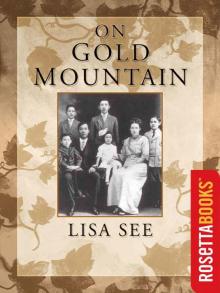 On Gold Mountain: The One-Hundred-Year Odyssey of My Chinese-American Family
On Gold Mountain: The One-Hundred-Year Odyssey of My Chinese-American Family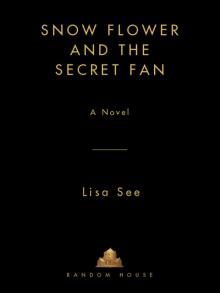 Snow Flower and the Secret Fan
Snow Flower and the Secret Fan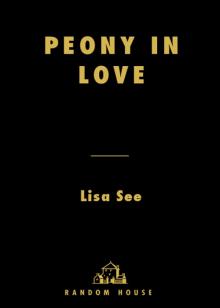 Peony in Love
Peony in Love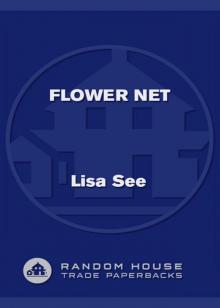 Flower Net
Flower Net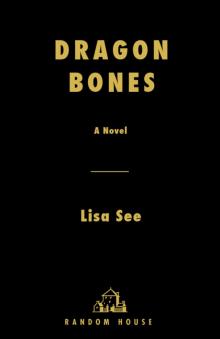 Dragon Bones
Dragon Bones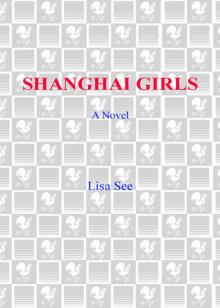 Shanghai Girls
Shanghai Girls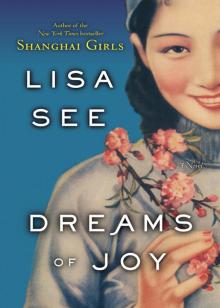 Dreams of Joy
Dreams of Joy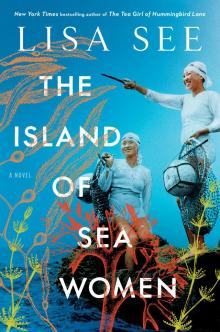 The Island of Sea Women
The Island of Sea Women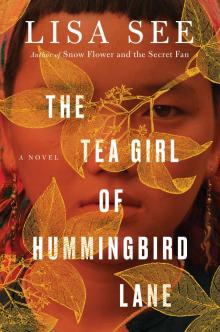 The Tea Girl of Hummingbird Lane
The Tea Girl of Hummingbird Lane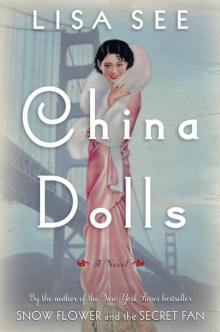 China Dolls
China Dolls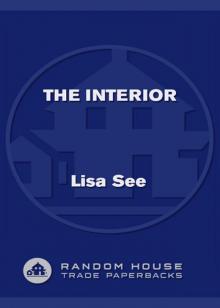 The Interior
The Interior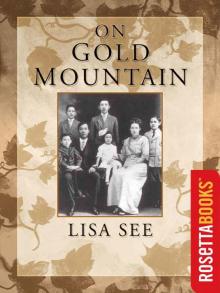 On Gold Mountain
On Gold Mountain